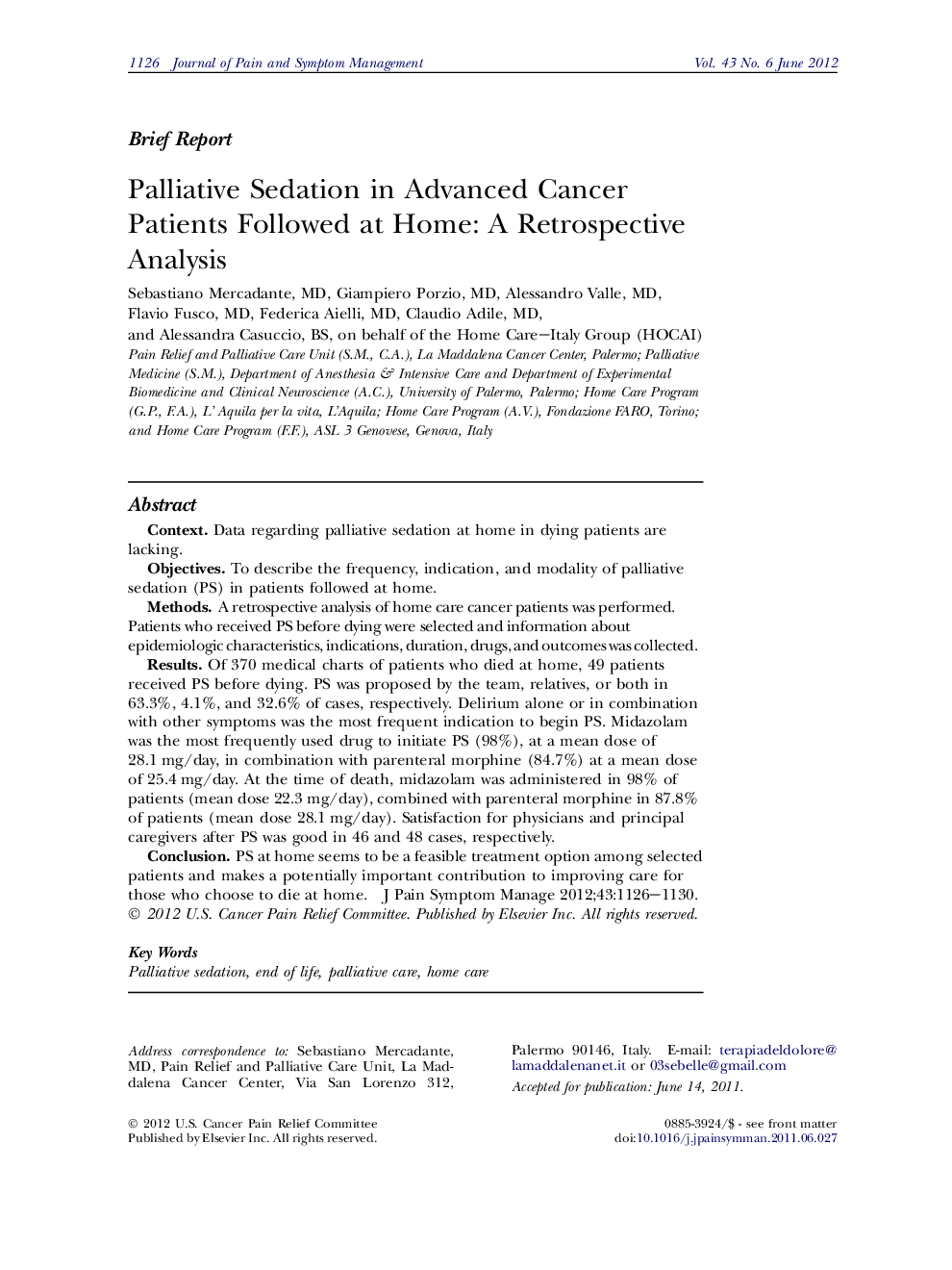| Article ID | Journal | Published Year | Pages | File Type |
|---|---|---|---|---|
| 2729818 | Journal of Pain and Symptom Management | 2012 | 5 Pages |
ContextData regarding palliative sedation at home in dying patients are lacking.ObjectivesTo describe the frequency, indication, and modality of palliative sedation (PS) in patients followed at home.MethodsA retrospective analysis of home care cancer patients was performed. Patients who received PS before dying were selected and information about epidemiologic characteristics, indications, duration, drugs, and outcomes was collected.ResultsOf 370 medical charts of patients who died at home, 49 patients received PS before dying. PS was proposed by the team, relatives, or both in 63.3%, 4.1%, and 32.6% of cases, respectively. Delirium alone or in combination with other symptoms was the most frequent indication to begin PS. Midazolam was the most frequently used drug to initiate PS (98%), at a mean dose of 28.1 mg/day, in combination with parenteral morphine (84.7%) at a mean dose of 25.4 mg/day. At the time of death, midazolam was administered in 98% of patients (mean dose 22.3 mg/day), combined with parenteral morphine in 87.8% of patients (mean dose 28.1 mg/day). Satisfaction for physicians and principal caregivers after PS was good in 46 and 48 cases, respectively.ConclusionPS at home seems to be a feasible treatment option among selected patients and makes a potentially important contribution to improving care for those who choose to die at home.
